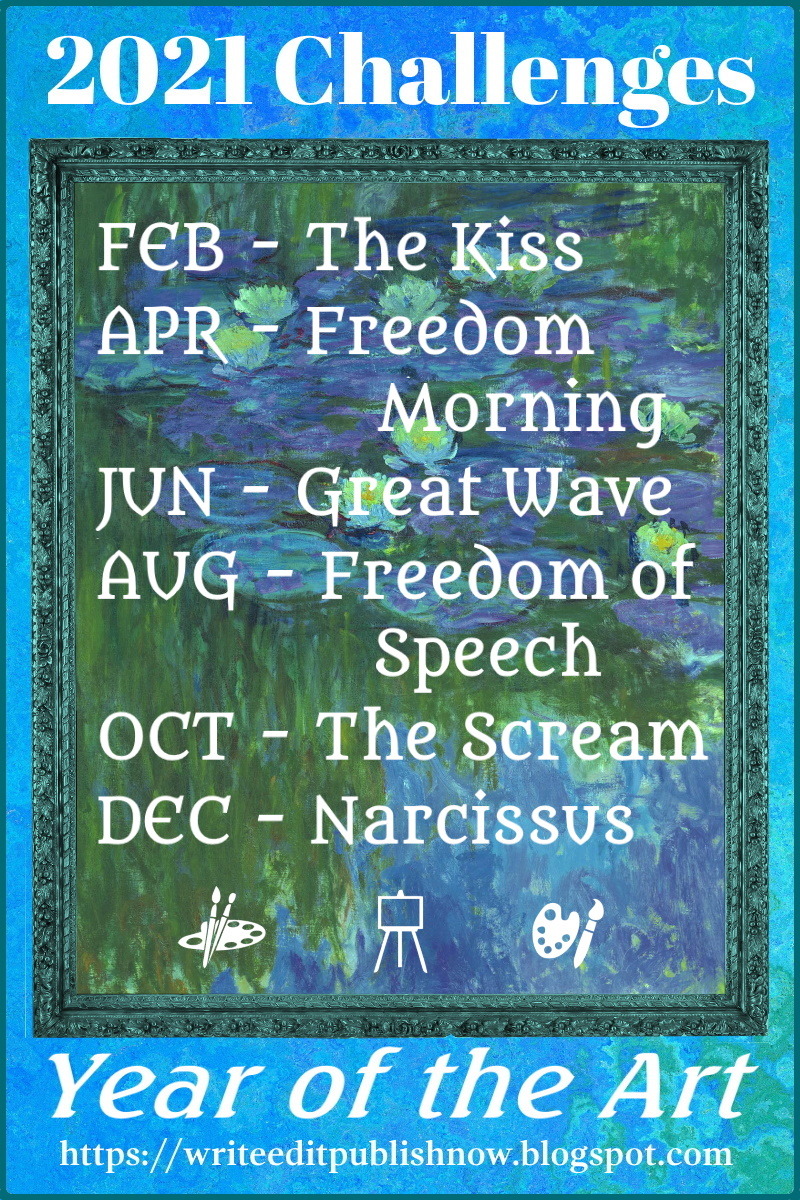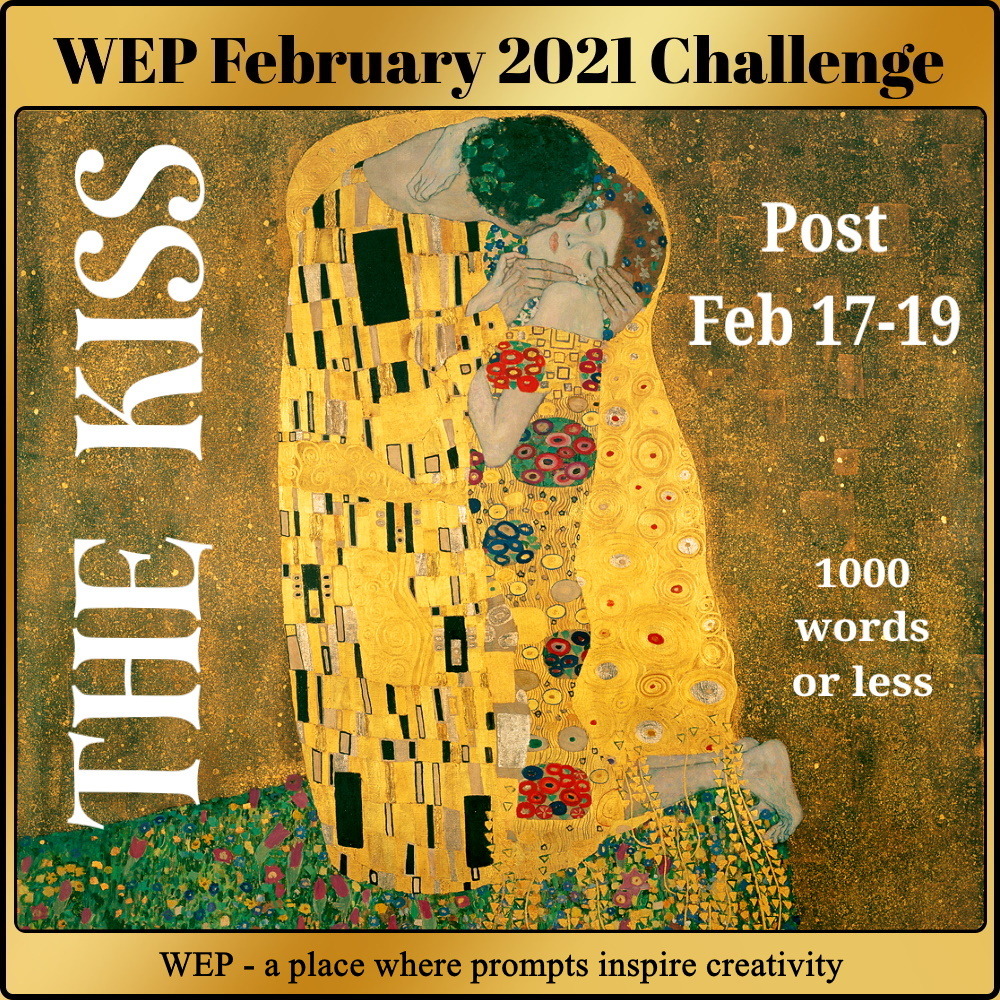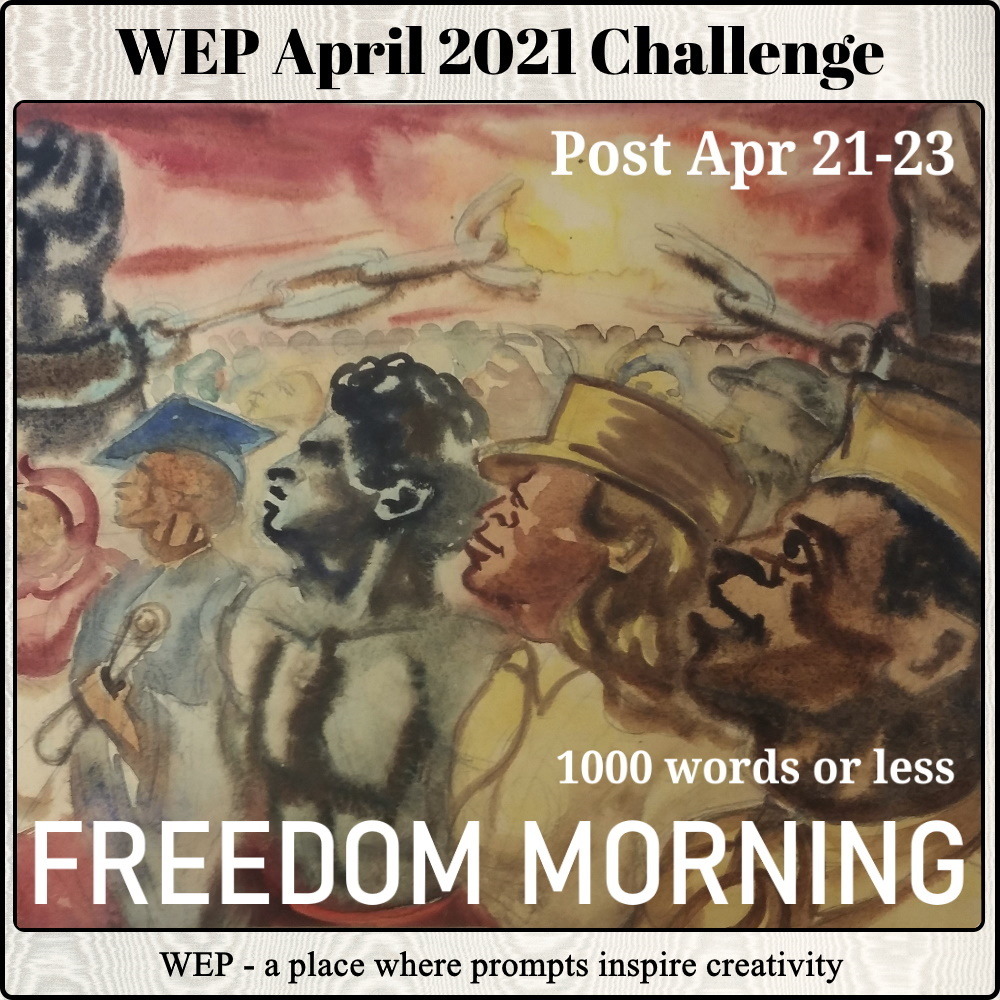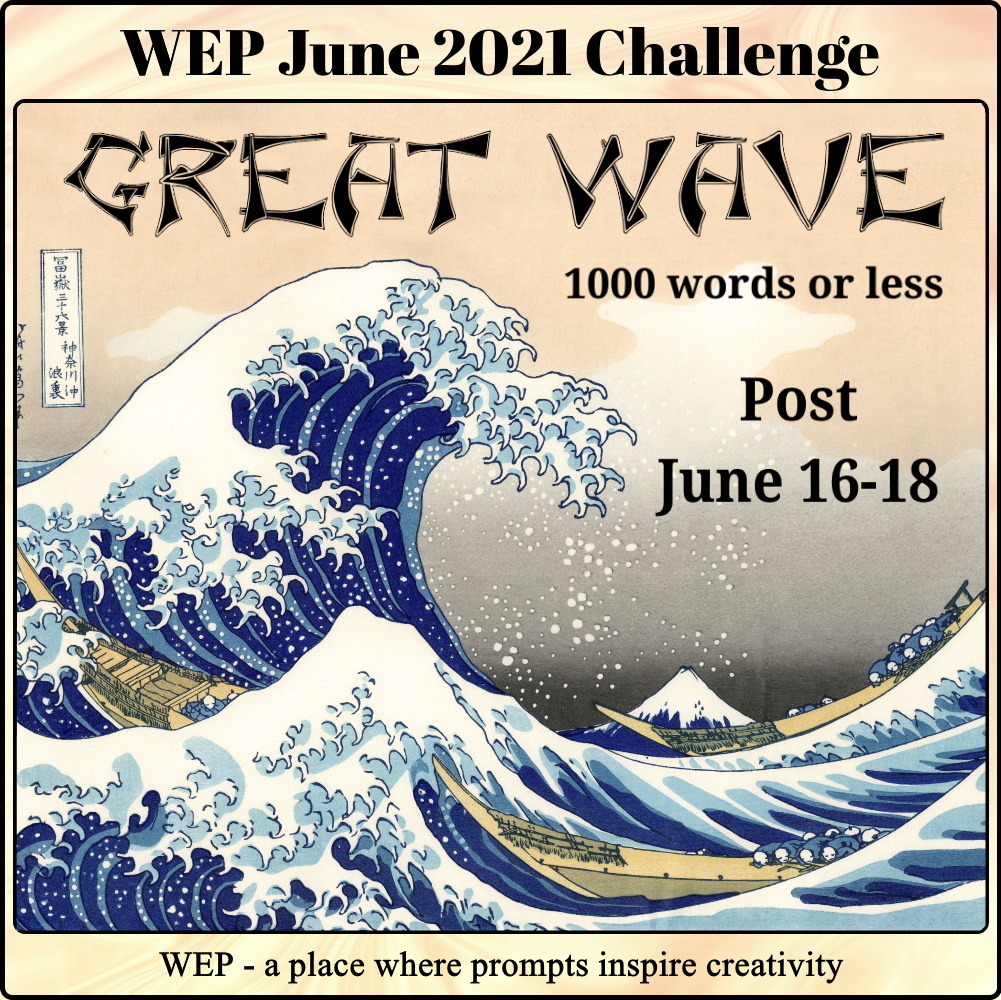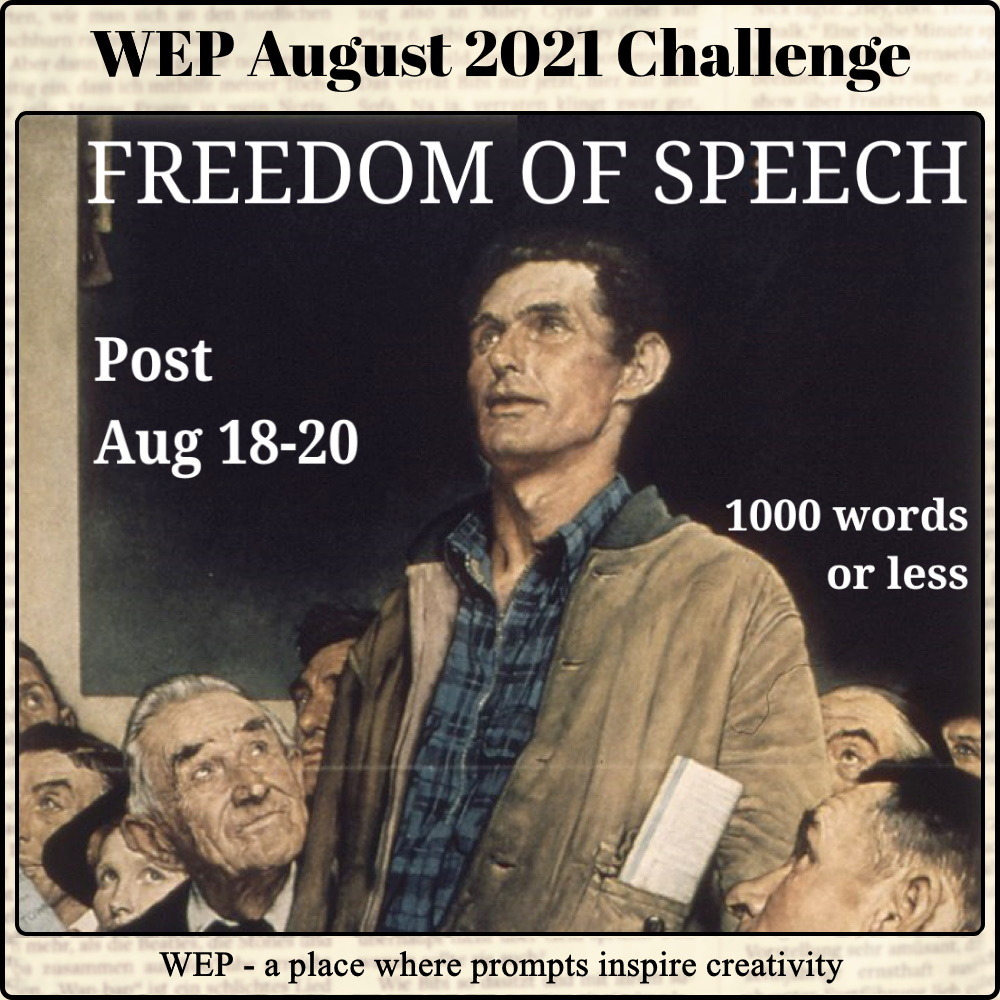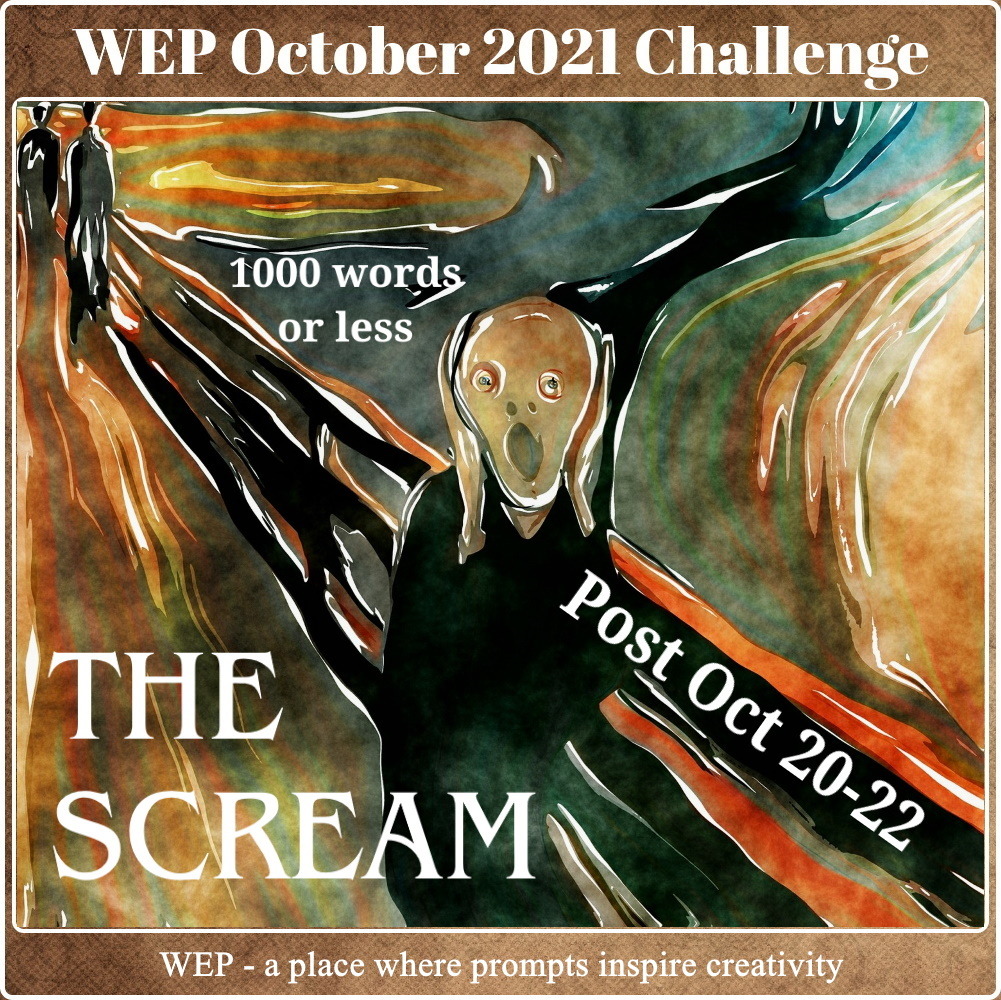Welcome to Challenges 2021
Year 2020 has been rough, the entire world convulsed with the pandemic, climate disasters, economic meltdowns and toxic politics. As the WEP team came together to brainstorm for the directions we take in 2021, we thought our writing prompts must reflect these real world issues we are all going through. And after the runaway success of the February 2020 prompt based on Vincent van Gogh’s Café Terrace at Night, it was a no-brainer to extend that to this year. So we reached into and drew from world art, at once inspirational, evocative and comforting. Each one worth a thousand words ... neat!
First, a big round of applause for Olga Godim, our in-house badge designer par excellence, who has drawn up another set of sumptuous badges in consultation with the team for display on our sidebars. Post the annual badge on your blog and let's get writing!
And a huge THANK YOU FOR Nila - the words accompanying these badges are all hers!

February - celebrate...with some sumptuous art!
What
could be more appropriate for Valentine month than Gustav Klimt’s The Kiss?
This
shimmery, early 20th century painting of a couple embracing in a
patch of wildflowers has riveted art aficionados across the world for decades.
Gustav
(1862-1918) was an Austrian painter, a prominent member of the Vienna
Secessionist movement. He is well known for his murals, paintings, and other
object d’art.
The
Kiss is one of his later, critically acclaimed works from what is known as his
‘Golden Phase,’ characterised by the use of gold leaf and exuberant, geometric
patterns. Read more about Klimt here.
Use
this amazing painting to kick off a romantic
love story of star crossed lovers. Or maybe a much married pair who’ve been
together for years. Of unrequited or lost love. Or any love of the other
gazillion types.
For un-Valentinish souls, remember that there are kisses other than romantic
ones. The kiss of life, the kiss of death,
the kiss of betrayal, the angel's kiss in spring. The mystical thousand ways of
kneeling and kissing the ground.
One
golden artwork, a zillion directions to go. Pick yours and run with it. We’re
cheering for you. And can't wait to see what you come up with!
April
Freedom Morning is a watercolour by Claude
Clark, the African American artist and art educator, painted in 1941.
“As a child in the churches, the schools and the
community, I dreamed of a destiny. My search became a single purpose for the
dignity of Black Americans.”
Claude Clark was born in Georgia in 1915. His art
characterises the African American diaspora experience. He faced prejudice, poverty and
racism but did not allow these to deter him. He mixed his own paints from the trashed tubes in art schools. When he could
not afford the expensive brushes and cleaning agents, he developed his unique
technique with the palette knife. Read more about his remarkable life here.
The interpretation of art (and prompts!) is in the eye of the
beholder and this artwork is rich with possibilities.
Will you let Freedom Morning spark a flash of hope for a
systematically suppressed character?
Will someone break free - of chains, of the past, of a closed
mindset - after years of living with them?
Or maybe someone will watch a brand new sunrise and come to a
decision to start life afresh? Rise to a challenge? :)
Overcome a hardship?
Take the artwork as a whole or in part and seed that into
imagination. Your canvas is unlimited.
June
The
Great Wave is an iconic work created in the 1820’s by Hokusai. Katsushika
Hokusai (1760-1849) was a Japanese artist from the Edo period. He was a
master of Ukiyo-e, a genre of woodblock prints and paintings very popular at
the time in his country. Ukiyo-e translates loosely as ‘images of the floating
world.’ The Great Wave off Kanagawa,
also condensed to The Great Wave, is part of a series called Thirty-six views of Mount Fuji, is Hokusai’s
most well-known work. Have a peek at the series here.
And read more about Hokusai
here.
The
immediate response to this prompt could be to relate it to the tsunami of 2004
or the Japanese nuclear disaster. It is a small step from there to jump to
the climate issues we are facing round
the world, the unprecedented weather patterns and natural disasters small and
large.
But
a great wave need not be always of water – it can be a great wave of refugees. And
of soldiers. Or protesters and last but not the least, voters.
Equally a great wave of an emotion – pain, love, bitterness, rage, nausea,
which one will your characters feel?
It
could even be a small wave, we'll leave the size up to you – the wave of a hand, the flutter of a flag. Or cravat/tie.
So
many places to float away to, which one will you choose with this prompt?
August
Norman Rockwell
was an American artist and illustrator, widely known for his illustrations for
the Saturday Evening Post. This particular artwork – The Freedom of Speech, was
created as a part of a series called The Four Freedoms based on a wartime
speech given by FDR. The painting depicts a young, working class man standing
up and expounding his ideas to a group of older, white-collar men. It was
inspired by Rockwell’s visit to a town meeting where a man rose to voice an
unpopular view. Read more about the Four Freedoms
and explore Norman’s other works here.
This
prompt has rich possibilities. Particularly topical as authorities have veered
towards authoritarianism and people across the world have exploded in unrest.
Books
have been banned and burnt, film shows have been mobbed by fundamentalists,
newspapers/editors have been gagged, cartoonists have been shot dead, journalists and activists jailed or killed for voicing ideas, questioning authority and informing the public. Controversies on the role of social media and internet have further muddied
the waters.
On
the other hand, there have been fearless voices rising and speaking out. From
celebrities like Meryl Streep and Greta Thunberg to lesser known but equally
important local citizens and activists.
But, just
as the young man in Norman’s immortal work, your interpretation need not have the
huge sweep or weight of world affairs.
It
can equally be a small town teenager speaking up against a bully, a young woman
rising to defend a project idea to her employer, a marginalised community
representative finding a spot on the local radio station.
Even
a writer fighting a proposed cut by their editors - yes, you can go meta! ‘A million ways to be, you know that there are!’ :)
October
The
Scream by Edvard Munch was a shoo-in for October - this challenge is devoted to
the horror genre in honour of the Halloween/Samhain/observances of the other
world spirits. Go as creepy as you like. But other genres are welcome too,
there’s no genre police here, except that non-negotiable no to erotica.
This
is a world renowned artwork symbolising the horror and angst of the human
condition. It has since its creation in 1893, become an iconic representation
of modern life. Read about The Scream
here.
Edvard Munch was a Norwegian born
artist who split much of his working life between Berlin and Paris. Mental
health issues ran in the family, so Munch had occasion so observe its effects from
close proximity. He was much influenced by Impressionists and post-Impressionists
such as van Gogh.
The
prompt is wide open to interpretations - who will it be that screams? And why –
in pain, terror or exultation?
Will
it be a human scream that rends the air? Or an animal one? Or a scream from another world altogether? Or
will it be a cosmic scream of the planet?
A
silent scream in colours, like the one Munch felt in a sunset sky above a
fjord? Or an articulated one in sound and words? Just a gasp or piercingly
loud? That’s up to you, we’ve got our ears cocked and ready listening for it.
December
This
one depicts a classic subject by an Italian Master and needs no introduction. Narcissus
is a well known character from Greek mythology – his story has been repurposed
and retold through the ages. Caravaggio was one of
the prime movers of the Italian art scene of the 16th/17th
century and a good few of his artworks are based on the classics. He was a
controversial figure in his lifetime, but has come to be recognised as an
artist with far reaching influence on modern painting. He was a master of chiaroscuro
and developed the use of shadows in art.
This
particular painting can be interpreted many ways – will you update Narcissus’
story to fit a modern timeline?
Or
retell it from a different angle/POV, perhaps a Narcissa instead?
Explore
the mental disorder that is known after Narcissus and its impact on
caregivers/physicians/family?
Or
perhaps go in a different direction entirely - make
Narcissus quite incidental to the story – maybe the painting is only a prop in
the setting?
Remember
there is no right or wrong interpretation, you can make the prompt front and
centre of your entry. Or not. Totally your call. Think out of the box, or rather,
frame – and delight us with yours.
Happy writing!
There you have it folks! Inspiration for the New Year!
PLEASE share this page with your friends on Facebook, Twitter, on your blog and anywhere else you hang out! Here is the link to the Challenges Page of the Menu.
https://writeeditpublishnow.blogspot.com/p/challenges-2021.html
~~~***~~~
If you posted your story UNMASKED despite the lack of a formal challenge, please let us know in the comments with a link! We'll come by and applaud you! REMEMBER: Post any day in December!
So far this December we've had posts by:




